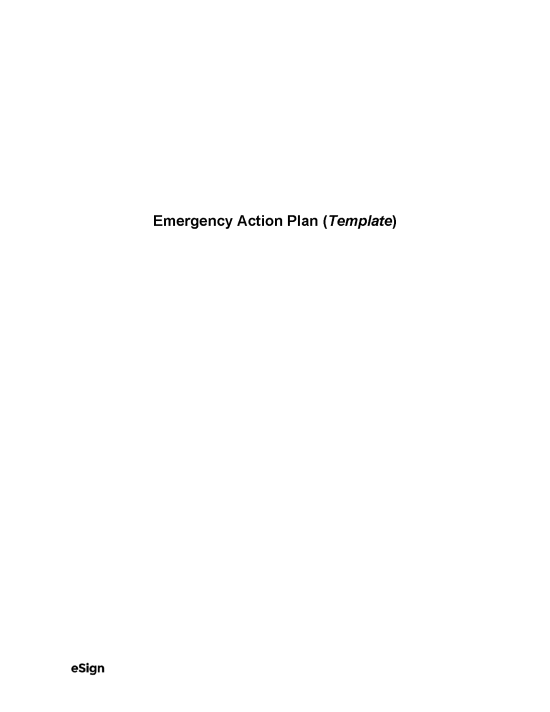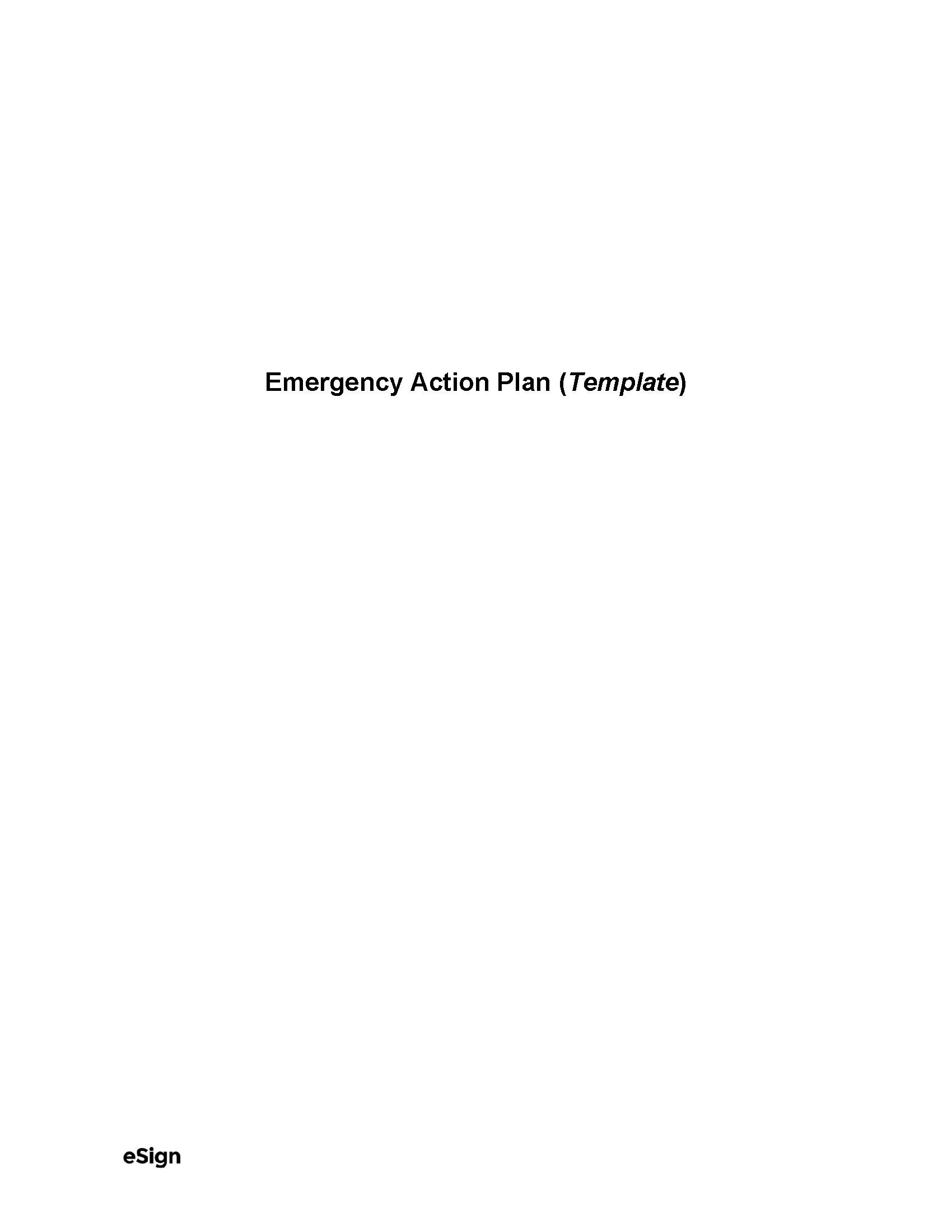OSHA Requirements
OSHA requires nearly all workplaces to have an Emergency Action Plan (EAP) that is on-site, accessible, and explained to employees.[1] Employers with fewer than 10 employees can communicate the plan orally instead. The following hazards require additional safety materials:
View OSHA Requirements |
||||
| Hazard | Requirement | |||
| Powered platforms |
|
|||
| Hazardous chemicals (PSM) | ||||
| Hazardous waste | ||||
| Hazardous substances |
|
|||
A Fire Prevention Plan (FPP) is required if all employees must evacuate during a fire.[8] An EAP is not required if all employees must respond to a fire.[9]
What’s Included in an EAP
- Procedures for reporting fires and other emergencies.
- The evacuation and exit routes.
- Procedures for employees responsible for rescue, medical duties.
- Procedures for employees who must carry out critical plant operations (if applicable).
- How employees will be accounted for following evacuation.
- The name and title of each staff member who employees can contact for more EAP information.
Resources
Sample
Once a hurricane watch has been issued:
- Stay calm and await instructions from the Emergency Coordinator or the Designated Official.
- Moor any boats securely, or move to a safe place if time allows.
- Continue to monitor local TV and radio stations for instructions.
- Move early out of low-lying areas or from the coast, at the request of officials.
- If you are on high ground, away from the coast and plan to stay, secure the building, moving all loose items indoors and boarding up windows and openings.
- Collect drinking water in appropriate containers.
Once a hurricane warning has been issued:
- Be ready to evacuate as directed by the Emergency Coordinator and/or the Designated Official.
- Leave areas that may be affected by storm tide or stream flooding.
During a hurricane:
- Remain indoors in the following shelters:
- Small interior rooms on the lowest floor and without windows
- Hallways on the lowest floor away from doors and windows
- Rooms constructed with reinforced concrete, brick, or block with no windows
Tornado
- When a warning is issued by sirens or other means, seek the following shelters:
- Small rooms on the lowest floor and without windows
- Hallways on the lowest floor away from doors and windows
- Rooms constructed with reinforced concrete, brick, or block with no windows
- Stay away from outside walls and windows.
- Use arms to protect head and neck.
- Remain sheltered until the tornado threat is announced to be over.
Earthquake
- Stay calm and await instructions from the Emergency Coordinator or the Designated Official.
- Keep away from overhead fixtures, windows, filing cabinets, and electrical power.
- Assist people with disabilities in finding a safe place.
- Evacuate as instructed by the Emergency Coordinator and/or the Designated Official.
Sources
- 29 CFR § 1910.38(b) & (f)
- 29 CFR § 1910.66(e)(9)
- 29 CFR § 1910.119(a)(1)
- 29 CFR § 1910.119(n)
- 29 CFR § 1910.120(l)(1)(i)
- 29 CFR § 1910.120(l)(1)(ii)
- 29 CFR §§ 1910.1047(h)(1)(i), 1910.1050(d)(1)(i), 1910.1017(i)
- 29 CFR § 1910.157(a) & (b)(1)
- OSHA – Do I Need an EAP?
- 29 CFR § 1910.38(c), EAP Minimum Requirements

